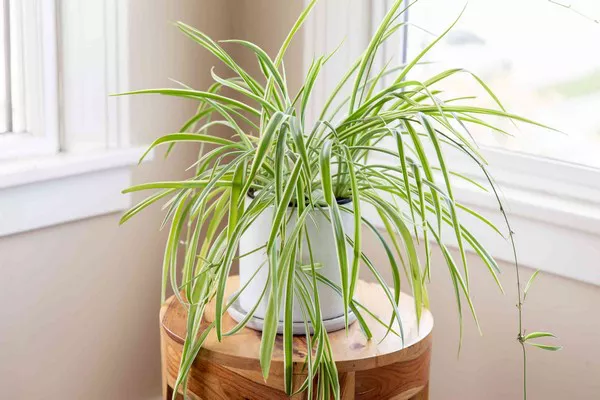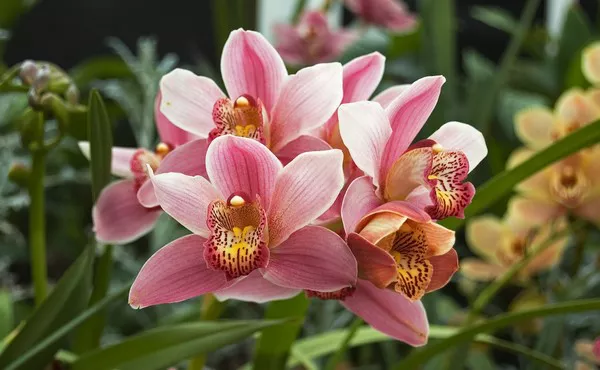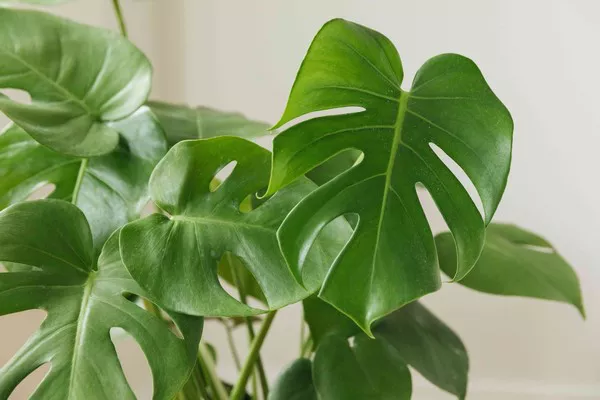Grieving is a natural process that each person experiences uniquely. The presence of plants can offer comfort, tranquility, and a connection to nature, which can be deeply healing during times of sorrow. Plants can symbolize growth, renewal, and the continuation of life, making them thoughtful gifts for someone who is grieving or meaningful additions to a memorial garden. Here are the top 10 best plants for grieving, each with unique characteristics that can provide solace and support during difficult times.
Top 10 Best Plants for Grieving
1. Peace Lily (Spathiphyllum spp.)
The peace lily is a popular houseplant known for its glossy, dark green leaves and elegant white flowers. It is relatively easy to care for and can thrive in low light conditions.
Symbolism and Healing Qualities
The peace lily symbolizes peace, purity, and rebirth. Its serene appearance and air-purifying qualities can create a calming atmosphere, making it an ideal plant for those grieving.
Care Tips
Light: Prefers indirect light but can tolerate low light.
Water: Keep the soil consistently moist but not waterlogged.
Temperature: Thrives in temperatures between 65-80°F (18-27°C).
2. Rosemary (Rosmarinus officinalis)
Rosemary is an evergreen herb with fragrant, needle-like leaves. It is often used in cooking and has a pleasant, aromatic scent.
Symbolism and Healing Qualities
Rosemary has been historically associated with remembrance. Its strong scent can evoke memories and provide a sense of comfort and connection to loved ones.
Care Tips
Light: Requires full sun.
Water: Allow the soil to dry out between waterings.
Temperature: Prefers temperatures between 60-70°F (15-21°C).
3. Forget-Me-Not (Myosotis spp.)
Forget-me-nots are small, delicate flowers that bloom in shades of blue, pink, and white. They are often found in gardens and wildflower meadows.
Symbolism and Healing Qualities
As the name suggests, forget-me-nots symbolize remembrance and enduring love. Planting them can serve as a lasting tribute to a loved one.
Care Tips
Light: Prefers partial shade to full sun.
Water: Keep the soil consistently moist.
Temperature: Thrives in cooler temperatures, ideally between 50-70°F (10-21°C).
See Also: Top 10 Smallest Evergreen Trees for Your Garden
4. Lavender (Lavandula spp.)
Lavender is a fragrant, flowering herb known for its purple blooms and soothing scent. It is commonly used in aromatherapy and for its calming properties.
Symbolism and Healing Qualities
Lavender symbolizes peace, healing, and tranquility. Its calming fragrance can help reduce stress and anxiety, offering comfort during the grieving process.
Care Tips
Light: Requires full sun.
Water: Water sparingly, allowing the soil to dry out between waterings.
Temperature: Prefers temperatures between 60-75°F (15-24°C).
5. Aloe Vera (Aloe barbadensis miller)
Aloe vera is a succulent plant known for its thick, fleshy leaves that contain a soothing gel. It is widely used for its medicinal properties, particularly in treating skin conditions.
Symbolism and Healing Qualities
Aloe vera symbolizes healing and protection. Having an aloe plant can be a reminder of self-care and the importance of nurturing oneself during times of grief.
Care Tips
Light: Prefers bright, indirect light.
Water: Water deeply but infrequently, allowing the soil to dry out between waterings.
Temperature: Thrives in temperatures between 55-80°F (13-27°C).
6. White Rose (Rosa spp.)
White roses are classic flowers known for their beauty and elegance. They are often used in bouquets and floral arrangements for their timeless appeal.
Symbolism and Healing Qualities
White roses symbolize purity, innocence, and reverence. They are often associated with remembrance and can be a comforting presence in a memorial garden or as part of a sympathy bouquet.
Care Tips
Light: Requires full sun.
Water: Keep the soil consistently moist but well-drained.
Temperature: Prefers temperatures between 60-70°F (15-21°C).
7. Angel’s Trumpet (Brugmansia spp.)
Angel’s trumpet is a tropical plant known for its large, trumpet-shaped flowers that hang downward. The flowers come in various colors, including white, yellow, pink, and peach.
Symbolism and Healing Qualities
Angel’s trumpet symbolizes transition and spiritual growth. Its striking blooms can provide a sense of awe and wonder, offering a moment of respite and reflection during difficult times.
Care Tips
Light: Prefers full sun to partial shade.
Water: Keep the soil consistently moist but not waterlogged.
Temperature: Thrives in temperatures between 60-85°F (15-29°C).
See Also: Top 10 Most Common Edible Flowers
8. Pansy (Viola tricolor)
Pansies are hardy, colorful flowers that bloom in a wide range of colors, including purple, yellow, and blue. They are known for their distinctive “faces” and long blooming season.
Symbolism and Healing Qualities
Pansies symbolize thoughts and remembrance. Their cheerful appearance and variety of colors can brighten a garden and serve as a comforting reminder of loved ones.
Care Tips
Light: Prefers full sun to partial shade.
Water: Keep the soil consistently moist.
Temperature: Thrives in cooler temperatures, ideally between 45-65°F (7-18°C).
9. Orchid (Orchidaceae spp.)
Orchids are exotic, elegant flowers that come in a variety of shapes, sizes, and colors. They are often grown as houseplants and are known for their long-lasting blooms.
Symbolism and Healing Qualities
Orchids symbolize beauty, strength, and endurance. Their intricate flowers can provide a sense of wonder and appreciation for the delicate intricacies of life, offering solace and reflection.
Care Tips
Light: Prefers bright, indirect light.
Water: Water sparingly, allowing the soil to dry out between waterings.
Temperature: Thrives in temperatures between 60-80°F (15-27°C).
10. Willow Tree (Salix spp.)
Willow trees are known for their graceful, weeping branches and soft, green leaves. They are often found near water and can grow to impressive sizes.
Symbolism and Healing Qualities
Willow trees symbolize mourning and resilience. Their flowing branches can create a peaceful, reflective space in a garden or natural setting, offering comfort and a place to meditate on memories.
Care Tips
Light: Prefers full sun.
Water: Requires consistently moist soil.
Temperature: Thrives in a wide range of temperatures but prefers cooler climates.
Conclusion
Plants have a profound ability to provide comfort, solace, and a connection to the natural world during times of grief. Whether through the calming presence of a peace lily, the fragrant reminder of a rosemary plant, or the enduring beauty of a white rose, these top 10 plants for grieving can offer healing and support. Creating a memorial garden with these plants can serve as a living tribute to loved ones, providing a space for reflection, remembrance, and peace.
You Might Be Interested In:



![10 Most Richest Cities in the United States [Revealed!]](https://www.validdownloads.com/wp-content/uploads/2023/12/Manjula-Pothos.webp)





















